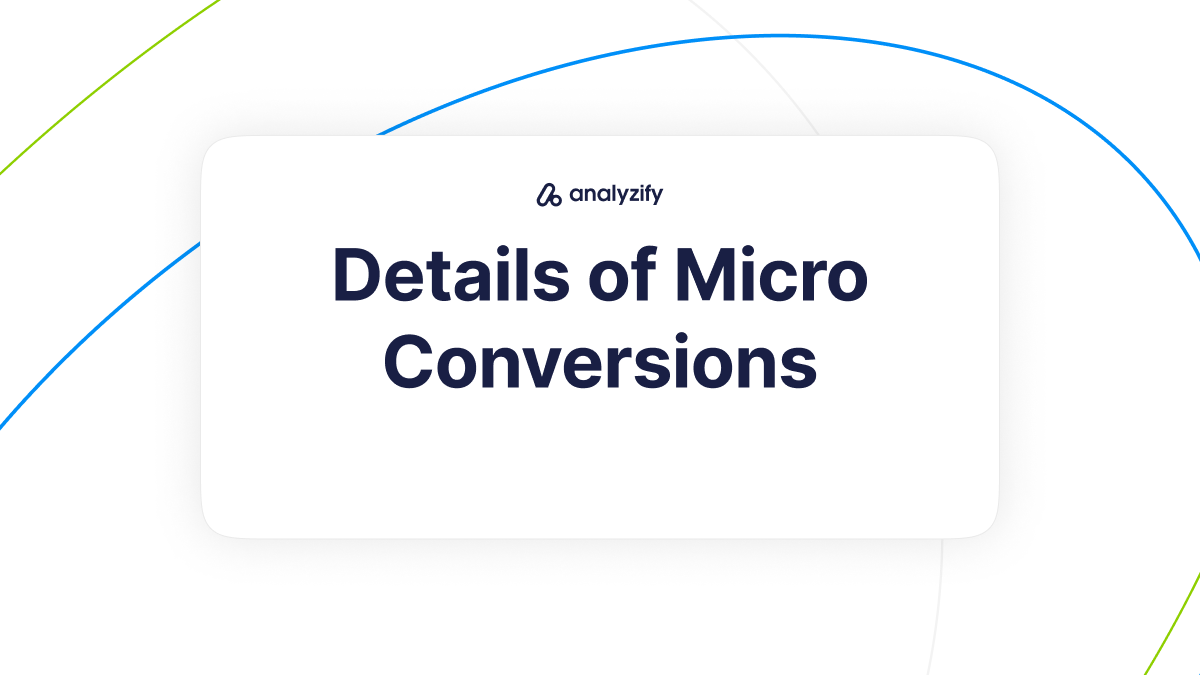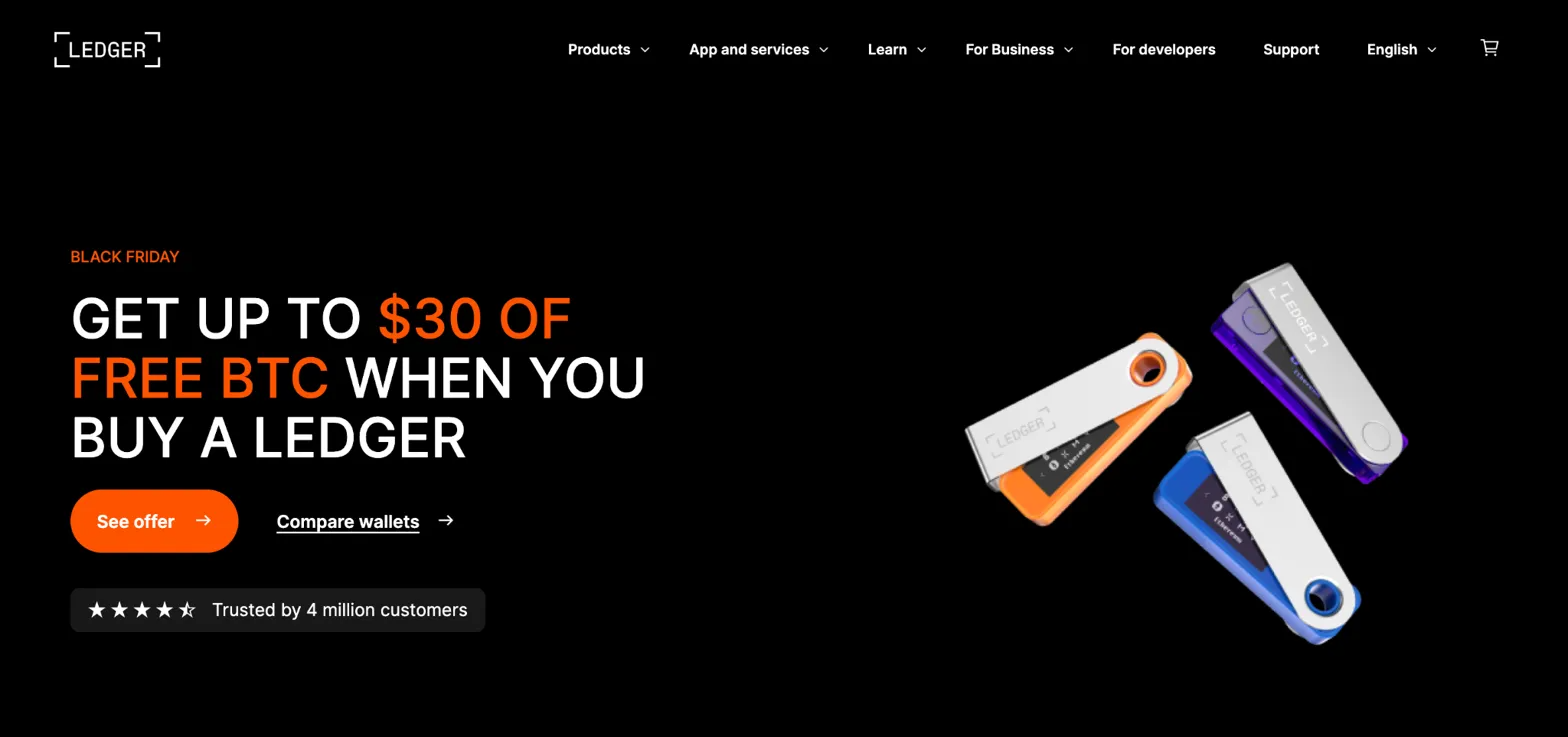Did you know that micro-conversions can lead to macro-conversions?
Micro conversions are the small steps a consumer takes before completing a purchase. These small actions can have a huge impact.
Micro conversion steps can vary from downloading your app to filling out a lead generation form. Although these actions are relatively simple, they have a massive impact on your bottom line.
Thus, it’s important to not only focus on the big picture, but also identify the micro conversions that ultimately drive business growth.
Key takeaways:
Micro conversions help you understand what a visitor is ready to do next on your website.
Micro conversions can be actions such as browsing a category, adding an item to cart, or starting the checkout process.
You can track your visitors’ micro conversions via Google Analytics 4 by setting “goals”.
You need to optimize your website to increase your micro conversions by optimizing your landing pages, form submission processes, checkout processes, and your website content.
What Is Micro Conversion?

So, what is a micro-conversion? Micro-conversions can be defined as “small conversion actions which are considered secondary to larger tasks.” They represent the stepping stones toward your conversion goal.
Micro-conversions are “minor actions” signifying that your website’s funnel is working correctly.
How to Track Micro Conversions(Key Events) with Google Analytics 4?
Bonus Content: We highly recommend checking out our guide on Enhanced Conversions
Examples of Micro Conversion
As said before, micro conversion is a small step that your users take throughout their journey that leads them to conversion.
Let’s explain with an example.
You’re a Shopify merchant and you want to announce a promo before a special day and you’ll send a marketing email about it. What will be your macro goal? Sales. Any step before these macro conversions
can be considered as micro conversions: Opening the email, clicking on the links, reviewing the products, and adding products to the basket.
Other micro conversion examples would be:
- Signup for a newsletter
- Adding items to a shopping cart
- RSS feed subscription
- Visiting particular websites
- View the category pages
- Move on to the checkout
- Enter the delivery address.
- Choose shipping method
- Chatbot communication
- Visiting a product page a predetermined amount of times
- Download whitepapers, studies, and eBooks.
- Watching recorded webinars by clicking
- Utilizing social media to follow your brand
- Clicking your paid advertisements
What Is The Difference Between Micro And Macro Conversions?
Micro conversion:
Every small action a user takes during the buying process.
A micro conversion is a target that paves the way for a macro conversion (add to cart)
Micro conversions are frequently used in funnel analysis to identify user abandonment steps.
Macro conversion:
In most cases, a macro conversion is a finished transaction.
A macro conversion is the main objective (sell a product, get a lead).
Macro conversions are the key indicator of a marketing campaign’s success.
Why Should You Track Micro Conversions? Why Are Micro-Conversions Important?
Micro conversions are those detailed goals that fall under the larger umbrella of your conversion.
But why are they so crucial?
- Identifying strengths and weaknesses: Micro conversions help you identify strengths and weaknesses in your broader marketing tactics. You should be tracking micro conversions for all major landing pages to really understand what’s driving macro conversions.
So how does this help?
This is a good way that you can isolate when a weak point is putting a damper on macro conversion rates.
- Understanding the user journey: By tracking micro-conversions, you can better understand the user’s journey and find ways to reduce friction and boost conversions at each step along the way.
What can you learn from this?
You can identify drop off points. If you don’t have a way to track these then how are you going to tell how far from an actual conversion you are? You need to be able to determine not only when you should
offer a discount or bonus but also if the design of your checkout page is effective enough.
- Enabling retargeting: Suppose a user browses your website, but isn’t ready to buy anything and opts out. What then? Later, you can track that user down through email marketing or ad retargeting and try to sell them something.
What’s the key here?
Give the user just enough incentive to push them over the edge and take action.
- Personalizing content: You can use the touch points they’ve already had with your brand to deliver personalized content that speaks to their needs and interests.
For instance?
If they interacted with an about page, they might be considering your brand.
- Improving usability: Tracking different site metrics can help you identify and fix usability issues.
What might this reveal?
For example, if you see a lot of people using your website’s search but very few of them buy anything, that could be a sign that your search isn’t finding what people are looking for, or, your home page is
missing some elements that leads people to look for items/products via search.
Examples of Micro Conversions from Real Companies
Below is a micro conversion example from a hardware wallet company, Ledger. They created a Black Friday landing page with two different offerings: “see offer”, and “compare wallets.”
According to the target customers’ choice, they might retarget these customers with a different offering.

Another example is from an Italian luxury fashion brand: Fendi. On the home page they have several options to shop such as woman, man, kinds, and gift ideas.
They also have special pages for detailed searches such as “Women’s Fendi Baguette” to capture specific interests.

How To Optimize Your Website For Micro Conversions
1) Landing page optimization with videos
To increase your chances of getting someone to take action, you need to make sure they are engaged with your site. If you can keep someone on your site for a longer period of time, the higher their chances are of performing a macro conversion.
One way to accomplish this is by using short explainer videos which are marketing videos used to explain a product or service. This may increase your conversion rate by 80%!
2) Use form optimization tips
- You can use lead magnets (checklists, reports, video tutorials, etc.) to draw your visitors’ attention.
- Play with the form length. See whether your form length is too long, or not. If it’s too long, you may want to shorten it.
- Don’t ask too many personal questions. It depends on the form type, yet, it is better to not ask personal questions if possible.
- When you actually need a lot of data and have a lot of questions to ask, multi-step forms are beneficial. Users will abandon the form after seeing more than five questions.
- Consider autofill for the longer-form forms.
- Consider adding a progress bar.
- Make sure your form is mobile-friendly.
3) Use valuable and downloadable content
You can create some downloadable content such as free guides, e-books, free case studies, and recorded webinars. These things may not lead directly to a macro conversion, but they are definitely a step towards it.
Additionally, they are a great way to showcase your knowledge and offer something of tangible value. Use these content as lead magnets on your website.
Bonus Content: You can explore our free Shopify Google Analytics Guide here!
4) Abandoned cart optimization
Cart abandonment is a big issue for all brands. On a global scale, the cart abandonment rate hits 70.19%. However, that doesn’t necessarily mean a bad thing.
Why? When a customer adds a product to their cart, they are establishing a relationship with your company and its offerings.
They were serious enough to put these items into their baskets. Therefore, it just means you need to remove the obstacles in their way to convert these visitors into customers.
But, how?
There are several ways to optimize your cart process for both micro and macro conversions. Such as:
- Visualize buyer’s journey for your shoppers
- Be cost-transparent (especially for shipping costs)
- Use autofill
- Remove any distractions from the checkout page
- Make your review page transparent and easy
- Use guest-checkouts (Your customers shouldn’t be forced to create an account)
Frequently Asked Questions about Micro Conversions
Still wondering about the ins and outs of micro conversions? Let’s address some common questions to deepen your understanding.
1) What exactly are micro conversions?
Micro conversions are small, measurable actions users take on your website that indicate progress towards a larger goal (macro conversion). Examples include newsletter signups, adding items to a cart, or viewing product pages.
2) How do micro conversions differ from macro conversions?
Micro conversions are stepping stones towards your main goal, while macro conversions are the primary objectives of your website, such as completing a purchase or submitting a lead form.
3) Why should I track micro conversions?
Tracking micro conversions helps you understand user behavior, identify weak points in your funnel, and optimize your website for better overall performance and increased macro conversions.
4) Can you give some examples of micro conversions?
Common micro conversions include email newsletter signups, social media follows, downloading a whitepaper, watching a product video, or starting the checkout process.
5) How can I track micro conversions in Google Analytics 4?
In GA4, you can set up “events” to track micro conversions. Navigate to the “Configure” section, select “Events,” and then create custom events for the actions you want to track.
6) What’s the relationship between micro conversions and the user journey?
Micro conversions represent key touchpoints in the user journey, helping you map out how users interact with your site before reaching a macro conversion.
7) How can I optimize my website for better micro conversions?
Optimize landing pages with videos, improve form design, create valuable downloadable content, and streamline the checkout process to boost micro conversions.
8) What’s a good micro conversion rate?
There’s no universal “good” rate as it varies by industry and conversion type. Focus on improving your own metrics over time rather than comparing to broad benchmarks.
9) How do micro conversions help with personalization?
By tracking micro conversions, you can better understand user interests and behaviors, allowing you to deliver more personalized content and offers.
10) Can micro conversions help reduce cart abandonment?
Yes, by tracking micro conversions in the checkout process, you can identify where users drop off and optimize those steps, potentially reducing your cart abandonment rate.
Conclusion
Micro conversions are extremely important to the business owner, especially when you consider how many hidden chances there are to turn a potential customer into a paying customer. One of the most important takeaways here is that each conversion step should be tracked just as closely as the final conversion goal.
While the ultimate goal is to get users to complete your desired action, it’s also essential to understand exactly how they reach that point. And sometimes, informing that process with a little extra research and tracking can make all the difference!

































